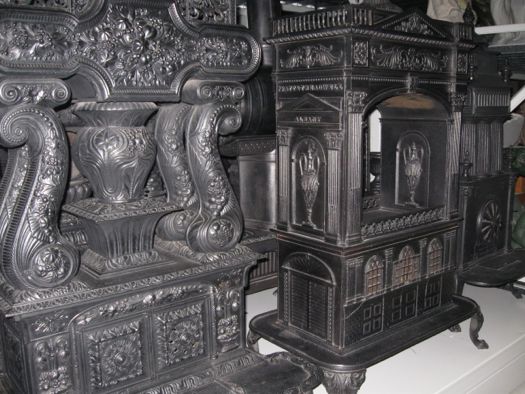Heavy Metal: Cast Iron Stoves from the Capital Region at the Albany Institute

A peek at some of the stoves in the institute's collection from a bunch of years ago when we got a behind-the-scenes tour.
As you'd expect, the collection of the Albany Institute of History and Art has its fair share of art.
But it also has all sorts of other items -- clothing, furniture, documents, various local objects, even stoves. Yep, stoves.
Well, they're not just any stoves. They're intricately-designed and decorated cast iron stoves from the time when Albany and Troy were manufacturing centers for the hot items. And the institute is putting a bunch of them on display.
The exhibit Heavy Metal: Cast Iron Stoves from the Capital Region opens this Saturday. Blurbage:
During the nineteenth century, Albany and Troy, New York, manufacturers were considered to be among the largest producers of cast-iron stoves in the world. Stoves made in these cities were renowned for their fine-quality castings and innovations in technology and design. The strategic location of Albany and Troy, located nine miles apart on opposite banks of the Hudson River, afforded easy and inexpensive transportation of raw materials to the foundries, and finished stoves to worldwide markets.
Cast-iron stove making reached its highest artistic achievement and technological advancement between 1840 and 1870. Flask casting and the advent of the cupola furnace permitted more elaborate designs and finer-quality castings. Stove designers borrowed freely from architectural and cabinetmakers' design books, a process that resulted in the use of Greek, Roman, Egyptian and Rococo revival motifs, patriotic symbols, and lavish floral designs, all reflecting current taste and sentiment. Stoves were given romantic names like "Venetian Parlor," "Gothic Parlor," and "The Temple" to enhance their allure and help the buyer identify them when ordering from a catalogue.
The exhibit will be on display until next August. And the Albany Institute's Tammis Groft will be giving a talk about the exhibit February 24.
... said KGB about Drawing: What's something that brought you joy this year?